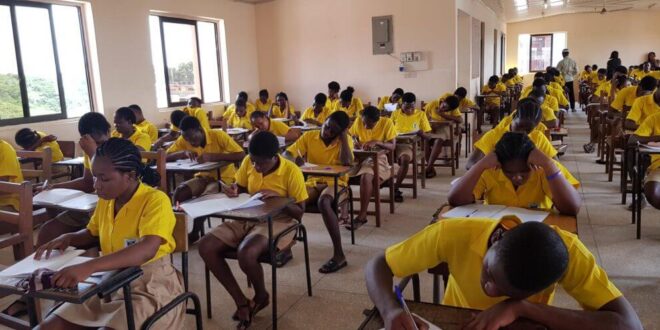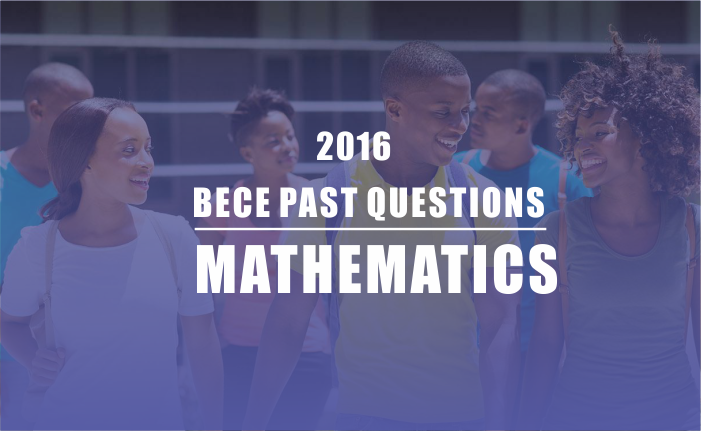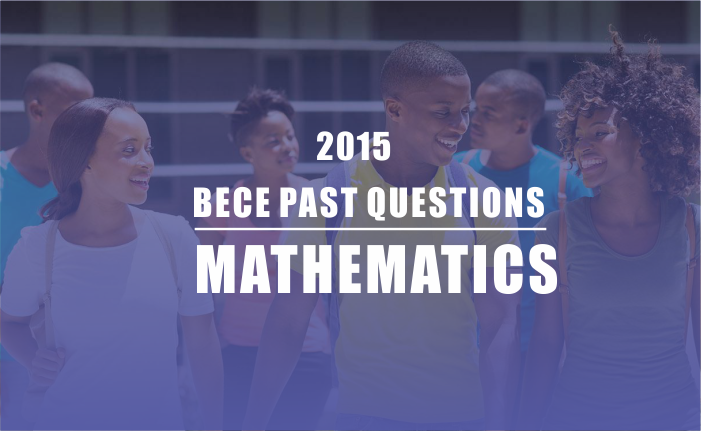Description
BECE 2016 Mathematics Questions and Answers
The Basic Education Certificate Examination, or BECE for short, is a test that is mandatory for students in West African countries, particularly in countries like Ghana, Nigeria, and Liberia. The BECE is also referred to as the Basic Education Certificate Examination. This examination is one of the most significant milestones that these students will take over the course of their educational journey.
This examination, which is a crucial event, will be encountered by students at some point during the course of their education process. Additionally, compared to other acronyms that are available, BECE is the one that is utilized more frequently. With the intention of achieving the goal of providing students who are preparing for the BECE 2016 Mathematics examination with useful insights that will assist them in their preparation, the purpose of this post is to supply them with the knowledge that they require in order to achieve the goal.
To ensure that we are successful in achieving this objective, we are going to carry out an exhaustive analysis of the questions and answers that are associated with the examination. It is vital for students to have a notion of the structure of the examination in addition to having knowledge of the subject matter that will be covered on the examination. This is because it is essential for students to be successful in their academic endeavours. The reason they are doing this is to increase the likelihood that they will be successful in the academic activities that they are participating in.

Overview of BECE Mathematics 2016
On the BECE Mathematics exam that was administered in 2016, students were assessed on a wide variety of mathematical ideas that covered a variety of subjects. These concepts included algebra, geometry, arithmetic, statistics, and trigonometry. A combination of objective questions, which required quick thinking and precision, and written questions, which required in-depth problem-solving skills, were included in the written portion of the exam. Students are able to more efficiently manage their time and receive the highest possible grades when they have a thorough understanding of the structure of the paper as well as the marking scheme.
Key Topics Covered in BECE 2016 Mathematics
The BECE Mathematics examination covers multiple areas that gauge a student’s grasp of basic and intermediate-level mathematical concepts. Here are the main topics from the 2016 paper:
- Arithmetic and Algebra: Basic arithmetic operations, fractions, percentages, ratios, and basic algebraic expressions formed the bulk of the questions. Many of these problems required quick calculation and logical reasoning skills.
- Geometry and Measurement: This section involved questions on shapes, areas, volumes, and the Pythagorean theorem. Students were tested on their ability to calculate measurements and understand the properties of different geometric shapes.
- Statistics and Probability: Questions in this section included simple data analysis, interpretation of charts, and probability problems. Students needed to understand the fundamentals of data interpretation and probability to excel in this area.
- Trigonometry and Number Patterns: This section included questions on number sequences and basic trigonometric concepts. Students needed to identify patterns and apply trigonometric ratios to solve problems.
Sample BECE 2016 Mathematics Questions and Answers
Understanding the types of questions asked and the proper methods to answer them is key to achieving high scores in BECE Mathematics. Below are a few sample questions and their answers to illustrate the question patterns and problem-solving techniques:
Question 1: Simplify the expression (5x+3y)−(2x−y)(5x + 3y) – (2x – y)(5x+3y)−(2x−y).
Answer: To solve this, combine like terms:
(5x−2x)+(3y+y)=3x+4y(5x – 2x) + (3y + y) = 3x + 4y(5x−2x)+(3y+y)=3x+4yThe simplified answer is 3x+4y3x + 4y3x+4y.

Question 2: Find the area of a rectangle with length 12 cm and width 5 cm.
Answer: The area AAA of a rectangle is calculated using the formula:
A=length×widthA = \text{length} \times \text{width}A=length×widthSubstitute the given values:
A=12×5=60 cm2A = 12 \times 5 = 60 \, \text{cm}^2A=12×5=60cm2The area is 60 cm260 \, \text{cm}^260cm2.
Question 3: If the probability of picking a red ball from a bag is 38\frac{3}{8}83, what is the probability of not picking a red ball?
Answer: The probability of not picking a red ball is the complement of picking a red ball:
1−38=581 – \frac{3}{8} = \frac{5}{8}1−83=85The probability of not picking a red ball is 58\frac{5}{8}85.
Tips and Techniques for Tackling BECE Mathematics Questions
Mastering BECE Mathematics involves not only knowledge of mathematical concepts but also specific strategies that help in efficiently tackling the questions. Here are some tips for students preparing for the examination:
- Understand the Concepts: Mathematics is a subject where understanding the basics is essential. Take time to study and understand key topics such as algebra, geometry, and probability, as they often form the core of the questions asked.
- Practice Past Questions: Reviewing past BECE Mathematics questions, such as those from 2016, helps students get familiar with the format and question types. This practice helps in improving speed, accuracy, and confidence.
- Time Management: Allocate time wisely for each question. Avoid spending too much time on difficult questions; instead, focus on answering as many questions as possible, then return to the challenging ones if time permits.
- Double-Check Your Work: Always recheck your answers, especially for objective questions where minor errors can result in incorrect answers. For calculations, verify each step to avoid careless mistakes.
- Work on Mental Math Skills: Objective questions in BECE Mathematics often require quick calculations. Enhancing mental math skills can help in solving these questions more efficiently without relying heavily on calculators.
Benefits of Using BECE 2016 Questions and Answers for Exam Preparation
When it comes to studying, using the BECE 2016 Mathematics problems and answers as a resource comes with a lot of benefits that are worth considering. The first advantage is that it gives pupils a more accurate depiction of the kinds of questions that they might be asked in future BECE tests.
This is the first benefit. Students are able to discover areas of strength and weakness by revisiting past questions, which enables them to concentrate on areas in which they need to enhance their skills; this improves their overall performance. Practicing previous questions is beneficial for a number of reasons, one of which is that it helps students develop their self-assurance, which in turn makes them feel more at ease and more prepared to deal with the pressure of examinations.

Conclusion
The BECE 2016 Mathematics paper contains a variety of questions that have been designed to evaluate students’ understanding of a wide range of mathematical concepts. These questions are provided in the form of a variety of questions. When students use a methodical approach to studying, maintain a consistent practice routine, and successfully manage their time, they have the potential to achieve high scores and perform well on the mathematics examination.
This is because they have the ability to control their time effectively. In order for students to be ready to face the BECE examination with self-assurance and preparedness, it is necessary for them to have familiarized themselves with prior questions and have formed an understanding of the concepts that lay behind each solution.





Reviews
There are no reviews yet.